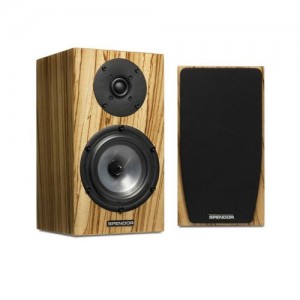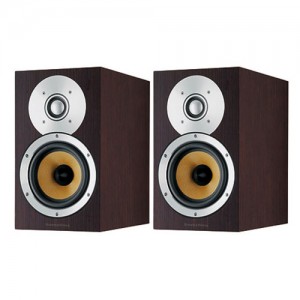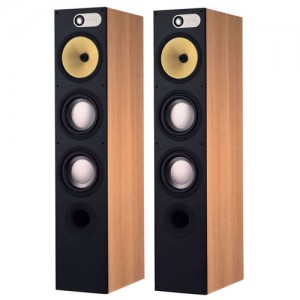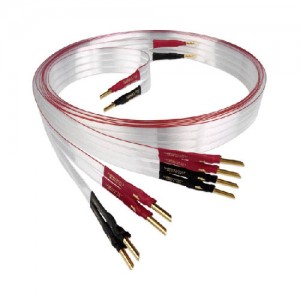Speaking Loud & Clear…
Part 1 of 3
Speakers are an essential component of any Hi-Fi or Home Cinema system. How else are you going to hear the audio that’s been produced?
This article on the Hifi Gear Blog will hopefully be a helpful piece to assist in choosing a set of speakers for both Hi-Fi and Home Cinema set-ups. Split into to two parts, we will explore designated Hi-Fi Speakers and 5.1 AV surround sound speakers as well as then considering what to do if your speakers need to both be for two-channel audio reproduction as well as Home Cinema too.
Speakers are mass produced for many various purposes. Whether it’s for a P.A. system, computer or for a stereo system, the speaker is that vital component for audible reproduction. However, P.A. system speakers are mostly designed to be able to reproduce at high volume levels, with quality becoming a less important factor, computer speakers are usually designed to work best at a certain bandwidth in a frequency range, purely as a lot of internet content is compressed, and stereo speakers are designed, mostly in many cheap systems, to be able to reduce and adequate sound – often leaving essential detail out. Yet, at Hifi Gear we do recognise that speakers should be quality and affordable in every price band; thus offering a large choice that we can mostly supply from our on-site stock-room.
Firstly, let’s have a look at speakers for a two-channel stereo set-up. With regard to amplification, please read the previous blog article ‘How to choose an amplifier’.
The best way to get a good pair of speakers is to match them to your current system. However, if you’re upgrading to a completely new system it is worth while trying to match speakers in price to the amplifier that you are potentially looking at to buy. For example, an amplifier, like Marantz’s PM6004 priced at £309.90, should ideally be matched to a similarly priced speaker package, just like B&W’s 686 bookshelf speakers at £299.00. This is quite a close match on price. Yet, it may not as always be as close as this. The other main thing that should be considered, if not more importantly, is both the sound of the amplifier and the speakers. Amplifiers all have their own unique reputation in their tonal qualities – this too relates to speakers even more so. If you have a bright sounding amplifier you may possibly wish to dampen the higher end through using a mellower sounding speaker. Or, vice versa, a brighter sounding speaker set could potentially help to improve an amplifier which delivers a mellow sound. Certain speaker brands have built themselves a reputation for their tonal qualities. Spendor are renowned for their mellow high-end and their robust, yet smooth lower-end frequency range. This is achieved by surrounding every component speaker in the cabinets with their very own chamber. On the other end of the spectrum, B&W often build speakers that cater for all the frequency bandwidths very well; though mainly have a great deal of detail and clarity in the mid-high to high-end frequencies. As you can probably understand, there is so much choice to consider.
If you are buying new speakers it is worthwhile spending time in a demonstration room with a set of price equivalent speakers and an amplifier that both needs to be representative of what you may already have, or a potential candidate if you are upgrading an amplifier, as well as speakers too. We are able to host private demonstrations within our fully equipped demonstration rooms at Hifi Gear, Gloucester. When demonstrating it is worth choosing a specific track which you feel you know very well in terms of its sound performance on your current system. If you are auditioning a set of speakers, remember to set the tonal controls on the amplifier to neutral. Doing so will allow the speakers to act neutral and naturally show both strong points and weaker points of their reproduction qualities. If you notice new things on the recording that you haven’t noticed before, or if things are more defined and detailed, the speakers may just be for you. However, never forget one vital and golden rule: personal preference. In principal, the speakers that you feel credit your music, as well as your hearing preferences the best, are most likely to be the strongest speaker candidates for your system.
Recognising that some might not be able to access a demonstration room, we have made a small list of what to do instead:
- Look for speakers within your budget that compliment your amplifier choice, in terms of wattage (speakers should be closely match or a maximum of 20 watts more powerful), impedance and frequency response.
- Once you’ve found an ideal candidate, or candidates, research the brand and what they offer. Doing so will build your knowledge of their ideals and what their speakers are designed to do.
- Look for personal recommendations or even Hi-Fi reviews. Reading a magazine or internet review articles will help to get an expert’s inside knowledge and own personal beliefs.
These are three essential steps to researching speaker choices. However, please don’t hesitate to contact us at Hifi Gear where we can give both expert and reassuring advice; along with personal recommendations from our experienced team members.
Now is the opportunity to see the difference between floor standing speakers and bookshelf speakers. The information below will hopefully define and clarify differences and key information to assist you in looking for an ideal set of speakers for your stereo Hi-Fi set-up.
Bookshelf Speakers
Bookshelf speakers are as they say, designed for bookshelves or for other locations where space is at a premium. Audio enthusiasts often believe that a smaller cabinet will not be as capable as delivering a more depth-filled performance. However, as technology in speakers has grown, we can now see (or more appropriately hear) that smaller speaker performance levels have dramatically improved over the years. This is a credit to the advanced levels of engineering, expertise and even the manufacturing quality and their choice of materials.
Bookshelf speakers have become so advanced that they can often run as rivals to some floor-standing speakers. Using bookshelf speakers as opposed to floor-standing speakers can be ideal. However, it is best to place them on specially designed speaker stands. Using these, as opposed to a table or a side board for your speakers will help to minimise resonance. Resonance can be an intrusive sound that ruins detailed audio performance. Using speaker stands can help to minimise this problem. We sell ideal stands specifically designed for bookshelf speakers at Hifi Gear. Our best sellers, the Atacama ranges starts from a great value £58.98. All Atacama stands are designed to limit rumble and resonant pollutants. Also, using Atacama gel isolation products in conjunction to the stands will further help to limit resonant distortion and protect speakers from slipping by providing them grip and protection from any physical accidental force.
Floor-Standing Speakers
Floor-standing speakers are ideal for those in the scenario where space is no issue. Size can vary, but the cabinets are specifically designed to provide the internal speaker components a great space to work within. The large cabinets help to allow the speakers to breathe and, in turn, to sound great. Not only is a speaker component responsible for great sound, but the cabinet has a great influence of the overall sound too.
Choosing the right speakers, as we have already mentioned, requires both time and careful consideration. However, floor-standers also require further research and listening time. They’re sound quality, when price or performance matched to higher-end amplifiers can be even more rewarding. This is why the more expensive floor-standing speakers, from the like of ProAc and Usher to name some examples, will require a more investigative look before making decisions in regard to purchase. Again, we’re more than happy to help at Hifi Gear in this department.
Lastly, connection between speakers and amplifier is vital. Speaker cables for all price bands are available to allow the user to upgrade connection quality and consequently further improve sound quality and enhance integrity too. QED Silver Anniversary is a great starting point for anybody looking to upgrade connection quality. For the more adventurous, and those with less concern as to budget, we offer more cables from the likes of Chord’s Super Epic Twin and Nordorst’s Red Dawn.
Speaker connection is not as simple as it used to be. These days many, not necessarily all, speakers feature double four speaker posts on the rear. This allows for two types of connection: Bi-Wiring or Bi-Amplification. Descriptions follow;
Bi-Wiring
This term refers to the extra speaker terminals that you might find on your speakers. This allows for an extra run of speaker cable to be connected to your speakers, depending if your amplifier features the extra terminal posts for bi-wiring. The overall idea is to allow for extra security and integrity in connection.
Bi-Amplification
Bi-Amplifying is a term given to the process of using two amplifiers to run one set of speakers. One is designated purely for the higher end, whilst the other focuses on anything from middle frequency and subsequently below. This is ideal for more control over sound, but mainly ideal for systems that are of a high-end price nature.
Finally, for all speakers, it is advisable to use banana plugs to limit potentially lethal damage to the amplifier which occurs from short-circuiting when using just bare-end speaker cable which can come loose and then cause malfunction of it touches the opposite terminal/cable strands. We can add banana plugs for either or both speaker and amplifier ends. Terminating speaker cable is a very wise idea for safety.
We hope that you have found this guide useful. However, please look at part two for advice in regards to Home Cinema and A/V speakers.



